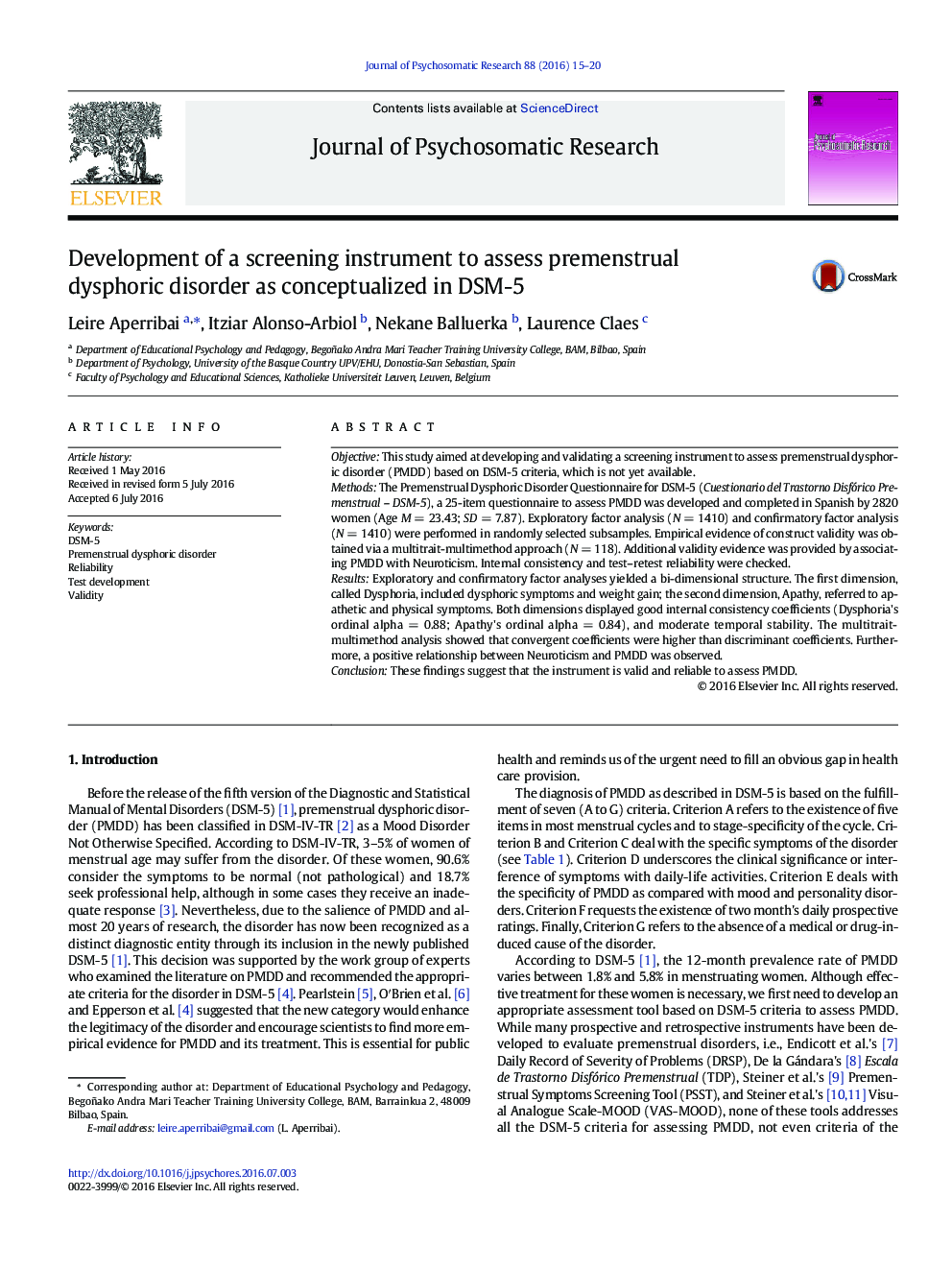| Article ID | Journal | Published Year | Pages | File Type |
|---|---|---|---|---|
| 949106 | Journal of Psychosomatic Research | 2016 | 6 Pages |
•A screening instrument for diagnosing premenstrual dysphoric disorder is proposed.•The instrument has been developed by using the seven diagnosing criteria of DSM-5.•Its two dimensions, Dysphoria and Apathy, have good internal consistency.•The instrument has shown acceptable reliability and validity.
ObjectiveThis study aimed at developing and validating a screening instrument to assess premenstrual dysphoric disorder (PMDD) based on DSM-5 criteria, which is not yet available.MethodsThe Premenstrual Dysphoric Disorder Questionnaire for DSM-5 (Cuestionario del Trastorno Disfórico Premenstrual – DSM-5), a 25-item questionnaire to assess PMDD was developed and completed in Spanish by 2820 women (Age M = 23.43; SD = 7.87). Exploratory factor analysis (N = 1410) and confirmatory factor analysis (N = 1410) were performed in randomly selected subsamples. Empirical evidence of construct validity was obtained via a multitrait-multimethod approach (N = 118). Additional validity evidence was provided by associating PMDD with Neuroticism. Internal consistency and test–retest reliability were checked.ResultsExploratory and confirmatory factor analyses yielded a bi-dimensional structure. The first dimension, called Dysphoria, included dysphoric symptoms and weight gain; the second dimension, Apathy, referred to apathetic and physical symptoms. Both dimensions displayed good internal consistency coefficients (Dysphoria's ordinal alpha = 0.88; Apathy's ordinal alpha = 0.84), and moderate temporal stability. The multitrait-multimethod analysis showed that convergent coefficients were higher than discriminant coefficients. Furthermore, a positive relationship between Neuroticism and PMDD was observed.ConclusionThese findings suggest that the instrument is valid and reliable to assess PMDD.
